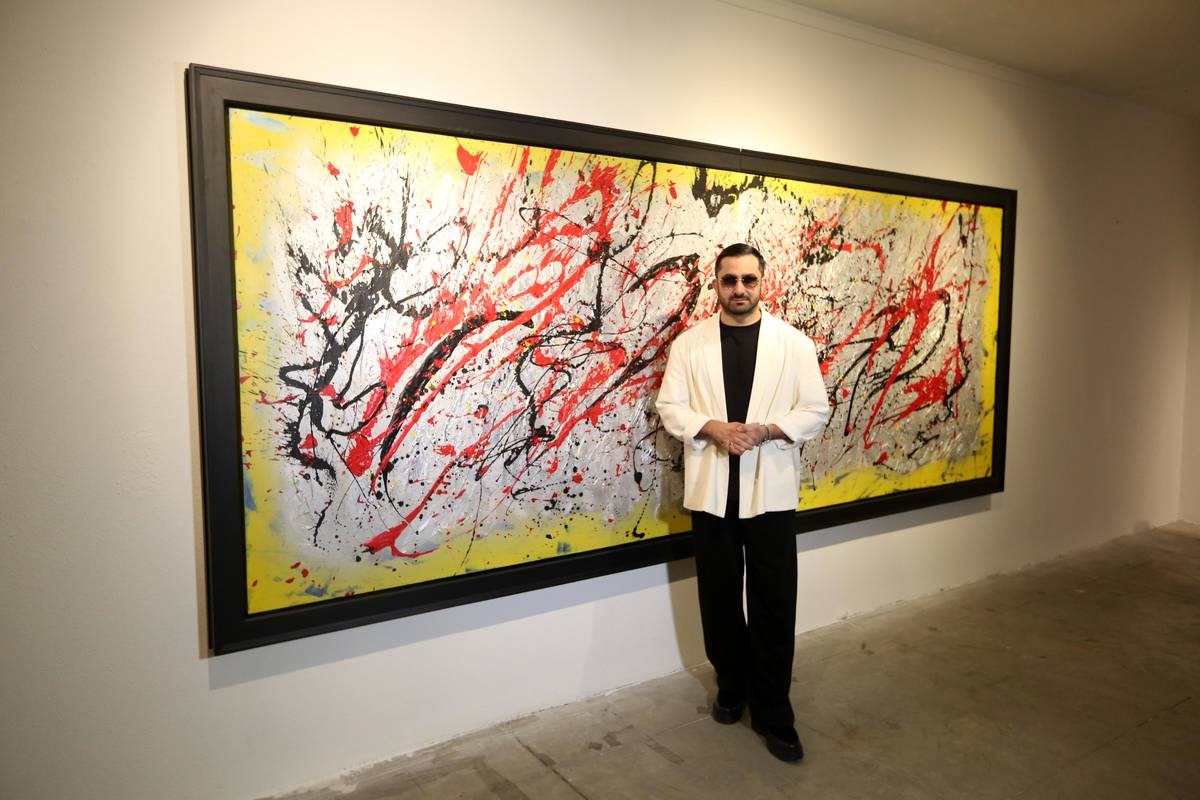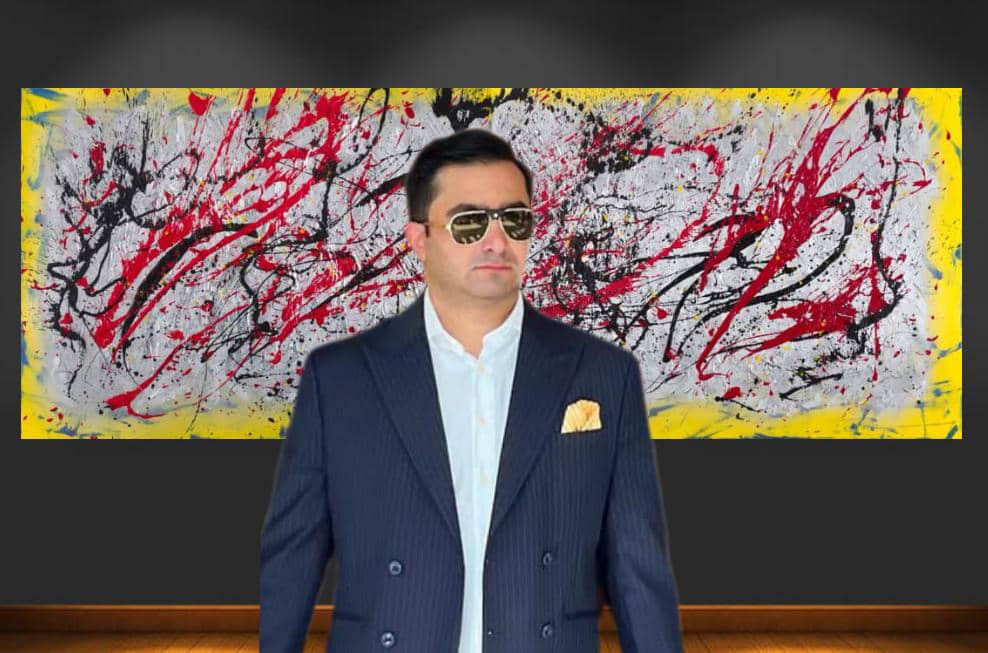
Figo Birjandian and the Red-and-Black Uproar in a Yellow Panorama
The viewer of this painting by Figo may find themselves caught between two opposing sensations: excitement and passion on one side, and turmoil and anxiety on the other. It is in this very contrast that the painting reveals its true power.
ArtDayMe: We review an exceptional panoramic work by Figo Birjandian, created in 2019 with acrylic on canvas, measuring 150 × 400 cm.
Birjandian’s acrylic painting is clearly an exuberant painterly action—a kind of high-energy statement. With forceful strokes, splashes, and the free flow of color, the work amplifies a sense of eruption and restlessness to its peak. The elongated rectangular canvas, like a tense panoramic stage, draws the viewer’s gaze from one side to the other, leaving no room for stillness.

Its free and asymmetrical composition, defined by diagonal lines and interwoven splashes, forms an organic and unrestrained structure. The rhythm is fast, discontinuous, and full of sudden shifts—like a hastened piece of music that constantly changes its beat. This perpetual motion compels the viewer’s eyes to travel ceaselessly across the canvas.
The painting’s texture combines smooth background layers with dense accumulations of color in its lines and splatters. Black and red strokes serve both as the visual framework of the work and as directional guides for its movement. This physical presence of paint conveys a tactile quality and a sense of living energy to the viewer.
Despite its fully abstract nature, the layering of colors and the overlapping of strokes create a visual depth. At times, black recedes into the gray background; at others, it surges forward with intensity—an interplay that enhances the sense of dimension and movement.

A Reading of the Colors
It is unclear on what basis the artist selected this palette, yet from an art-analytical perspective, it invites a compelling interpretation:
• Gray (background): A neutral, calm base that allows the eruption of the primary colors to stand out—a silence broken by the outcry of color.
• Yellow (border): A luminous, energetic frame that encloses the work and draws the gaze toward its center. Here, yellow conveys more of a sense of alertness and tension than calm.
• Red (splashes and strokes): The heartbeat of the work—symbolizing passion, emotion, and forceful eruption. Combined with black, it doubles the dramatic weight and tension.
• Black (lines and spots): The structuring and accentuating element of the movement—symbolizing depth, power, and the unknown.
• Small yellow specks: Brief sparks of light and hope amid the chaos.
Interestingly, despite these color associations, the work offers neither a literal narrative nor identifiable forms. Instead, the intensity of color and motion delivers an unfiltered expression of excitement, tension, and uncontainable energy. The viewer may find themselves caught between two opposing emotions: exhilaration and vitality on one side, chaos and anxiety on the other. This very contrast is where the painting asserts its power.
Through the use of dripping techniques and the free motion of the brush, Birjandian aligns himself with the tradition of action painting and abstract expressionism—a path paved by artists such as Jackson Pollock and Sam Francis—yet in this work, it is reinterpreted through his own personal signature and distinctive color composition.

Figo Birjandian’s painting becomes a battlefield of color and motion—a dialogue between stillness and eruption, between light and darkness, between passion and silence. It is a work that synchronizes not only the viewer’s gaze but also their heartbeat with its rhythm.
Figo Birjandian held his first solo exhibition, featuring selected works from three of his series, in February 2025 at Ariana Gallery, Tehran. All of his works in this show were sold.
Born in Tehran in 1989, Birjandian is a self-taught painter who grew up in an art-loving family and absorbed painting under the influence of his surroundings. After studying at the Canadian University Dubai, he pursued painting professionally, and his compelling large-scale narratives have drawn the attention of leading art institutions.

LEAVE A RELPY